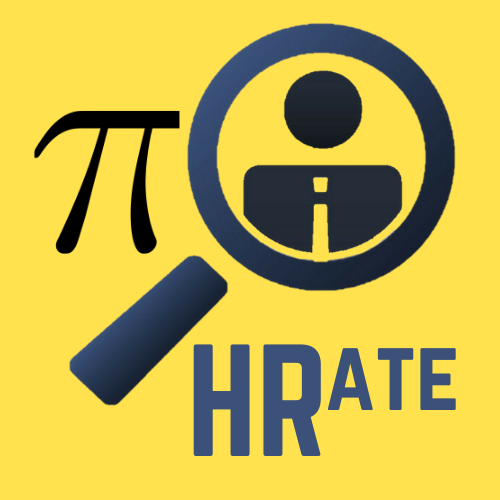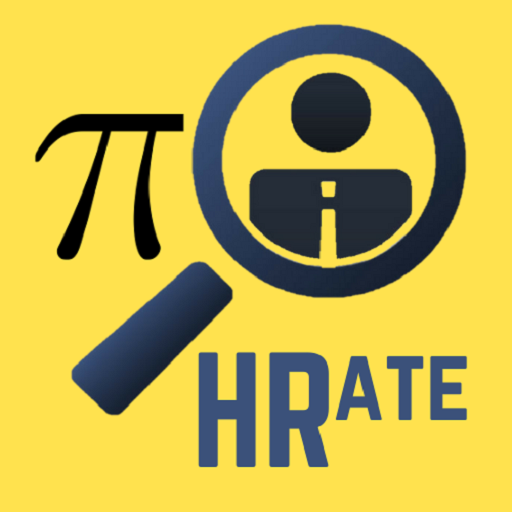The Future of Recruitment: What’s Changing in 2025?

The world of work is in perpetual motion, and nowhere is this dynamism more apparent than in the field of recruitment. Gone are the days of simply posting a job ad and waiting for resumes to flood in. The confluence of technological advancements, shifting candidate expectations, economic pressures, and a renewed focus on human-centric values is fundamentally reshaping how organizations attract, assess, and hire talent. As we look towards 2025, several key trends are accelerating, defining a new era for recruitment that demands agility, intelligence, and a deeper understanding of both technology and human connection.
This isn’t just about incremental adjustments; it’s about a paradigm shift. Recruiters, hiring managers, and HR leaders must adapt to stay competitive in a landscape increasingly defined by AI, skills-based evaluations, hyper-personalization, and an unwavering focus on the candidate experience. Let’s delve into the specific changes set to dominate the recruitment landscape in 2025.
1. The Unstoppable March of AI and Automation
Artificial intelligence is no longer a futuristic concept in recruitment; it’s rapidly becoming foundational. In 2025, AI’s integration will deepen, moving beyond simple task automation to more sophisticated applications:
- Hyper-Personalized Candidate Matching: AI algorithms will become significantly better at understanding the nuances of job requirements and candidate profiles, going far beyond keyword matching. They will analyze skills, experience, career trajectory, potential, and even cultural indicators (derived ethically from available data) to suggest best-fit candidates, including passive ones who might not perfectly match traditional criteria but possess high potential.
- Smarter Screening and Shortlisting: AI tools will automate the initial screening process with greater accuracy, evaluating resumes, cover letters, and even preliminary assessment results against predefined (and ideally bias-checked) criteria. This frees up recruiters’ time for more strategic activities like candidate engagement and complex evaluations.
- Generative AI for Content Creation: Tools like ChatGPT and its successors will become commonplace for drafting initial job descriptions, creating engaging outreach messages, generating interview questions tailored to specific roles and candidates, and even summarizing candidate profiles for hiring managers. The key will be using these tools as assistants, with human oversight ensuring accuracy, tone, and brand alignment.
- Predictive Analytics for Hiring Needs: AI will analyze historical hiring data, market trends, and internal business forecasts to predict future talent needs with greater accuracy. This allows organizations to build talent pipelines proactively rather than reacting to vacancies.
- Bias Detection and Mitigation: While a significant challenge, the focus on using AI to identify and reduce bias in the recruitment process will intensify. Tools will be developed and refined to flag potentially biased language in job descriptions or highlight demographic imbalances in candidate pools, prompting recruiters to take corrective action. However, constant vigilance and ethical oversight are crucial to prevent AI from inadvertently perpetuating existing biases.
- Intelligent Chatbots for Candidate Engagement: AI-powered chatbots will handle initial candidate inquiries 24/7, answer frequently asked questions, schedule interviews, and provide status updates, improving responsiveness and the overall candidate experience, especially during high-volume recruitment drives.
2. The Ascendancy of Skills-Based Hiring
The shift from pedigree (degrees, past job titles) to proficiency (demonstrable skills) is gaining significant momentum and will be a defining characteristic of 2025 recruitment. Several factors drive this: the rapid evolution of job roles, the limitations of traditional credentials in predicting performance, and a desire for more equitable hiring practices.
- Focus on Verifiable Skills: Companies will increasingly prioritize identifying and verifying specific skills required for a role, regardless of how a candidate acquired them (formal education, online courses, project work, previous experience).
- Rise of Skills Assessments: Pre-hire assessments (technical tests, coding challenges, situational judgment tests, soft skills evaluations) will become more integrated into the early stages of the recruitment process to objectively measure capabilities.
- Skills Taxonomies and Platforms: Organizations will invest in building internal skills taxonomies and leveraging platforms that help map skills across the workforce and identify skills gaps. This informs both external hiring and internal mobility.
- Rethinking Job Descriptions: Job descriptions will evolve to be more skills-focused, clearly outlining the core competencies needed rather than relying heavily on years of experience or specific degree requirements, thus widening the talent pool.
- Impact on Sourcing: Recruiters will use skills-based search criteria more frequently on platforms like LinkedIn and specialized talent marketplaces, looking for evidence of capabilities rather than just matching keywords in job titles.
3. Candidate Experience as a Competitive Differentiator
In a competitive talent market, treating candidates with respect, transparency, and efficiency is no longer optional; it’s critical for attracting and securing top talent. In 2025, the focus on candidate experience (CX) will intensify.
- Hyper-Personalization: Leveraging CRM and ATS data, recruiters will personalize communication and interactions at scale. This means tailored outreach messages, relevant job recommendations, and communication that acknowledges the candidate’s specific background and interests.
- Transparency and Communication: Candidates demand clarity. Organizations will prioritize providing clear timelines, regular updates (even if it’s a ‘no’), and constructive feedback whenever possible. Automation can help manage expectations and provide timely, standardized updates.
- Speed and Efficiency: Lengthy, convoluted hiring processes are a major deterrent. Companies will streamline workflows, leverage technology for faster scheduling and assessments, and empower recruiters and hiring managers to make quicker decisions.
- Seamless Technology Integration: The various tools used in the hiring process (ATS, assessment platforms, video interviewing software) must work together seamlessly to provide a smooth, user-friendly experience for the candidate. Clunky interfaces and repetitive data entry requests will damage the employer brand.
- Feedback Loops: Proactively soliciting feedback from candidates (both hired and rejected) about their experience will become standard practice, providing valuable insights for process improvement.
4. Employer Branding: Authenticity, Values, and Purpose
Employer branding moves beyond surface-level perks and focuses on the core identity and values of the organization. Candidates, particularly younger generations, are increasingly seeking employers whose values align with their own.
- Authentic Storytelling: Companies will focus on showcasing their genuine culture, employee experiences, and impact through authentic storytelling – employee testimonials, behind-the-scenes content, and clear communication of mission and values. Slick, overly produced marketing will be less effective than genuine representation.
- Emphasis on DEIB: Diversity, Equity, Inclusion, and Belonging will be central pillars of employer branding. Companies need to demonstrate tangible commitment through policies, representation, employee resource groups, and inclusive language in all communications.
- Employee Value Proposition (EVP) Clarity: A clear, compelling, and consistently communicated EVP that outlines “what’s in it for the employee” (beyond compensation) is crucial. This includes development opportunities, work-life balance, impact, and culture.
- Leveraging Social Media and Employee Advocacy: Platforms like LinkedIn, Glassdoor, and even TikTok will remain vital for employer branding. Encouraging and empowering employees to share their authentic experiences (employee advocacy) will be a powerful strategy.
- Transparency in Compensation: Driven by legislation and candidate demand, pay transparency will become more widespread, requiring companies to be clearer about salary ranges in job postings and during the recruitment process.
5. Data-Driven Recruitment and Talent Intelligence
Recruitment will become increasingly analytical, using data not just to track activity but to drive strategic decisions.
- Advanced Metrics: Moving beyond time-to-fill and cost-per-hire, organizations will focus on quality-of-hire, source effectiveness, candidate experience scores, diversity metrics, and predictive analytics (e.g., predicting offer acceptance rates).
- Talent Intelligence Platforms: Tools that provide real-time insights into talent markets, competitor hiring activities, compensation benchmarks, and skill availability will become indispensable for strategic workforce planning and sourcing.
- ROI Measurement: Demonstrating the return on investment for recruitment initiatives, technologies, and employer branding efforts will be crucial for securing budget and buy-in.
- Data Integration: Integrating data from the ATS, HRIS, learning platforms, and performance management systems will provide a holistic view of the talent lifecycle, enabling more informed decisions about hiring profiles and internal development needs.
6. Internal Mobility and the Rise of the Talent Marketplace
Recognizing the cost-effectiveness and engagement benefits of internal hiring, organizations will invest more heavily in facilitating internal mobility in 2025.
- Internal Talent Marketplaces: Platforms that allow employees to view open roles, project opportunities, and mentorship programs, and enable managers to search for internal talent based on skills, will become more common.
- Focus on Upskilling and Reskilling: Recruitment strategies will be closely linked with learning and development initiatives. Companies will focus on identifying internal skills gaps and providing resources for employees to acquire the skills needed for future roles.
- Breaking Down Silos: Encouraging cross-functional movement and project-based work will help employees gain broader experience and prepare them for different roles within the organization.
- Career Pathing Transparency: Providing employees with clearer visibility into potential career paths within the company is essential for retention and internal recruitment success.
7. The Evolving Role of the Recruiter
The recruiter of 2025 is not merely an administrator or sourcer; they are a strategic talent advisor.
- Strategic Partner: Recruiters will work more closely with business leaders to understand strategic objectives and translate them into talent acquisition plans.
- Technology Integrator: Proficiency in leveraging AI tools, analytics platforms, and recruitment marketing automation will be essential.
- Brand Ambassador: Recruiters are often the first point of contact and play a critical role in representing the employer brand and communicating the EVP.
- Candidate Experience Advocate: They champion the candidate throughout the process, ensuring smooth handoffs, clear communication, and a positive experience.
- DEIB Champion: Recruiters will be actively involved in implementing inclusive hiring practices, diversifying talent pools, and mitigating bias.
- Data Analyst: Basic data literacy and the ability to interpret recruitment metrics to inform strategy will be required.
8. Adapting to Hybrid and Remote Realities
While the initial frenzy of remote work adoption has stabilized, hybrid and remote models are here to stay. Recruitment processes in 2025 will be fully adapted to this reality.
- Optimized Virtual Interviewing: Utilizing video interviewing platforms effectively, training interviewers for virtual assessment, and ensuring a smooth technical experience.
- Remote Assessment Tools: Employing online assessment tools that can be administered remotely and securely.
- Digital Onboarding: Creating engaging and comprehensive virtual onboarding experiences to integrate new hires into the company culture and processes, regardless of their location.
- Global Talent Pools: Leveraging remote work policies to access wider, more diverse global talent pools, requiring an understanding of international hiring complexities.
9. DEIB: From Aspiration to Integration
DEIB will move beyond being a separate initiative to being deeply embedded in every stage of the recruitment process.
- Inclusive Job Descriptions: Using tools and training to ensure language is free from bias and appeals to a diverse range of candidates.
- Targeted Sourcing: Actively seeking out candidates from underrepresented groups through specific channels and partnerships.
- Structured, Objective Interviews: Implementing standardized interview processes and competency-based questions to reduce subjective bias in evaluations.
- Diverse Interview Panels: Ensuring interview panels reflect diversity to provide different perspectives and reduce affinity bias.
- Data Tracking and Accountability: Measuring diversity metrics throughout the funnel and holding leaders accountable for progress.
Conclusion: The Synthesis of Tech and Touch
The future of recruitment in 2025 is undeniably intertwined with technology, particularly AI. Automation will handle repetitive tasks, data will drive strategic decisions, and platforms will connect talent and opportunity in new ways. However, this technological acceleration does not diminish the importance of the human element. If anything, it amplifies it.
As AI takes over administrative burdens, recruiters have the opportunity – and the imperative – to focus on the uniquely human aspects of their role: building relationships, understanding candidate motivations, assessing cultural fit, championing diversity, ensuring an empathetic candidate experience, and acting as strategic advisors to the business. The most successful recruitment functions in 2025 will be those that master the artful synthesis of cutting-edge technology and genuine human connection, creating processes that are efficient, intelligent, equitable, and ultimately, deeply human. Adapting to these changes is not just about staying current; it’s about building a sustainable talent pipeline that will fuel organizational success in the years to come.



